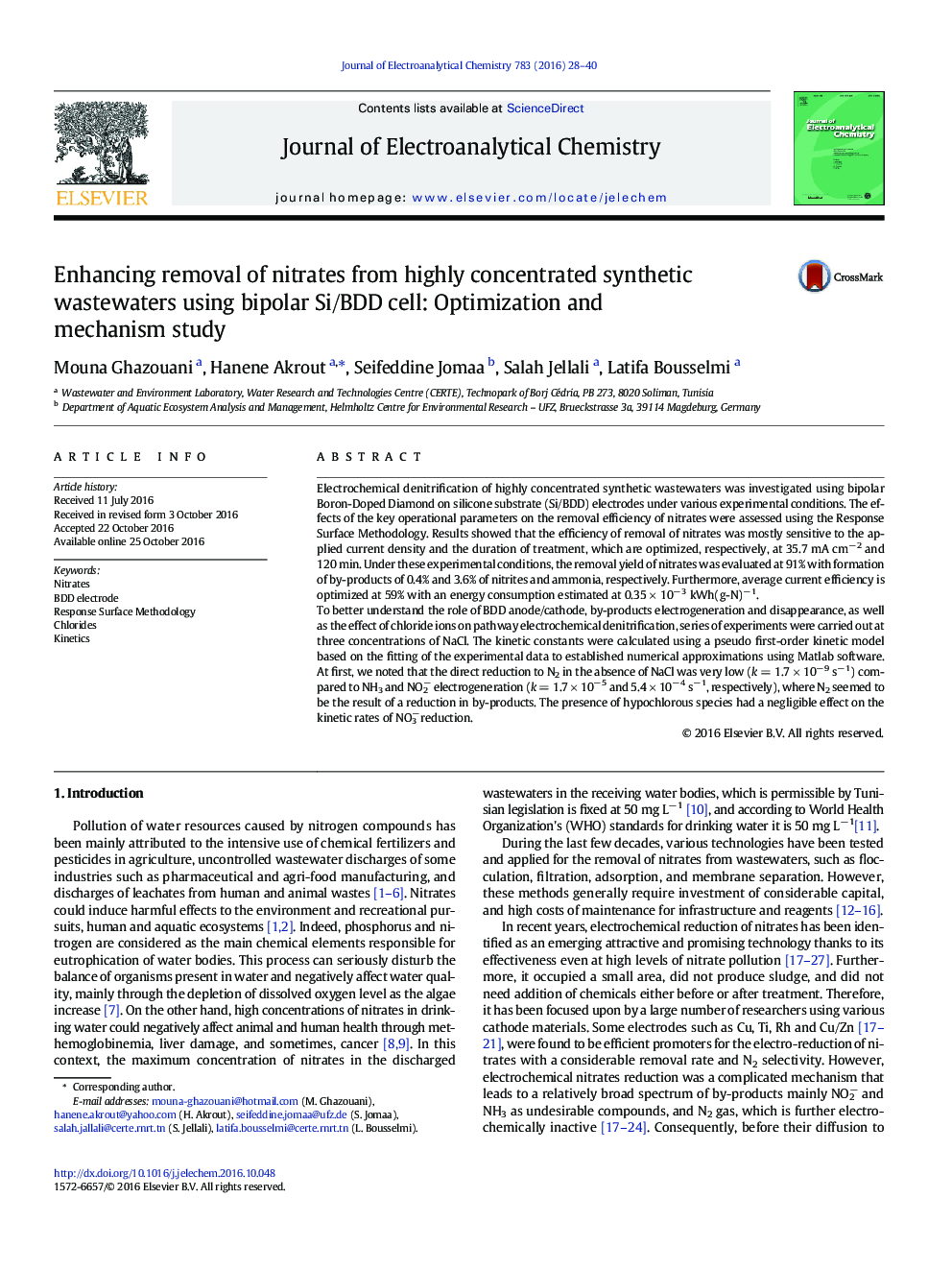| کد مقاله | کد نشریه | سال انتشار | مقاله انگلیسی | نسخه تمام متن |
|---|---|---|---|---|
| 6477053 | 1426592 | 2016 | 13 صفحه PDF | دانلود رایگان |

- Nitrates removal efficiency was investigated using bipolar BDD electrodes.
- The electrochemical nitrates reduction conditions were optimized through RSM.
- Effect of chlorides on electro-generated by-products removals was tested.
- Kinetic constants were determined using a pseudo first-order kinetic model.
Electrochemical denitrification of highly concentrated synthetic wastewaters was investigated using bipolar Boron-Doped Diamond on silicone substrate (Si/BDD) electrodes under various experimental conditions. The effects of the key operational parameters on the removal efficiency of nitrates were assessed using the Response Surface Methodology. Results showed that the efficiency of removal of nitrates was mostly sensitive to the applied current density and the duration of treatment, which are optimized, respectively, at 35.7 mA cmâ 2 and 120 min. Under these experimental conditions, the removal yield of nitrates was evaluated at 91% with formation of by-products of 0.4% and 3.6% of nitrites and ammonia, respectively. Furthermore, average current efficiency is optimized at 59% with an energy consumption estimated at 0.35 Ã 10â 3 kWh(g-N)â 1.To better understand the role of BDD anode/cathode, by-products electrogeneration and disappearance, as well as the effect of chloride ions on pathway electrochemical denitrification, series of experiments were carried out at three concentrations of NaCl. The kinetic constants were calculated using a pseudo first-order kinetic model based on the fitting of the experimental data to established numerical approximations using Matlab software. At first, we noted that the direct reduction to N2 in the absence of NaCl was very low (k = 1.7 Ã 10â 9 sâ 1) compared to NH3 and NO2â electrogeneration (k = 1.7 Ã 10â 5 and 5.4 Ã 10â 4 sâ 1, respectively), where N2 seemed to be the result of a reduction in by-products. The presence of hypochlorous species had a negligible effect on the kinetic rates of NO3â reduction.
183
Journal: Journal of Electroanalytical Chemistry - Volume 783, 15 December 2016, Pages 28-40